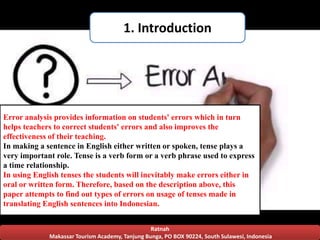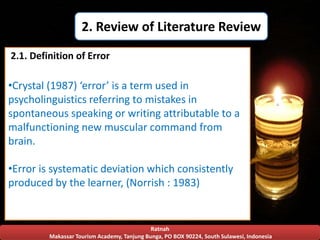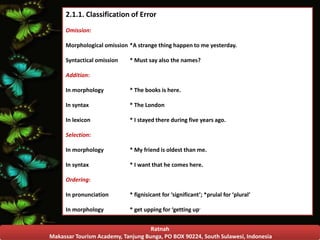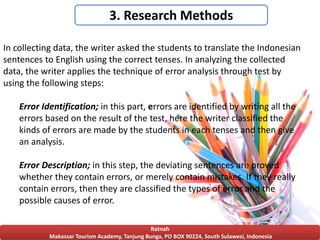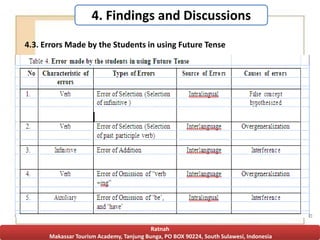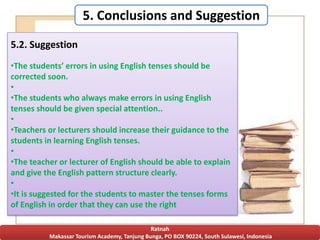This document analyzes errors in tense usage made by Indonesian students learning English. The study identified errors of omission, selection, and addition in verb forms, time signals, and auxiliary verbs. Sources of errors included interference from the first language and incomplete understanding of English rules. Causes were overgeneralization, ignoring restrictions, and incorrect hypotheses. The analysis can help teachers identify errors and improve instruction to minimize interference and other issues.


